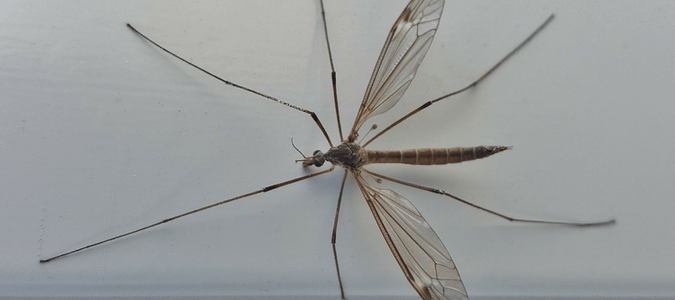
Mosquito hawks, also known as crane flies, are often mistaken for huge, threatening mosquitoes—but they are not a type of mosquito at all. In fact, they aren’t even related to mosquitoes, despite the fact that they are rumored—incorrectly—to feed on mosquitoes and their larvae.
What Is A Mosquito Hawk?
What do these huge flying insects eat? Do mosquito hawks bite humans, the way mosquitoes do? And perhaps most importantly, how can you keep these insects out of your home and yard?
What Mosquito Hawks Aren’t
First, let’s clear up a couple of misconceptions about mosquito hawks. Crane flies are not the only insect species referred to by that name. Dragonflies are also sometimes called mosquito hawks since they actually do prey on mosquitoes (along with other small, flying insects) for food. Contrary to popular rumor, however, dragonflies aren’t an effective factor in mosquito control, as they don’t eat nearly enough of those bloodsucking pests to make a dent in mosquito populations.
Crane flies also aren’t spiders, though they are called daddy longlegs in some regions—which is the same common name for a species of spider with long, spindly legs, similar to the long legs of a crane fly. Other common regional names for crane flies include gallinippers, golly whoppers and mosquito eaters.
The latter name points to another misconception about crane flies: that they eat mosquitoes or their larvae. The truth is, crane flies actually feed only on plant matter—usually the roots of a variety of different grasses—and only in their larval stage. Adult crane flies don’t eat much of anything at all, making their mosquito predator status nothing more than a myth.
Finally, crane flies do not bite humans, nor do they sting. In fact, they don’t bite (or sting) any animal. These insects live only for a total of a few days, and the majority of their relatively short life cycle is spent living underwater or in moist soil as larvae, where they consume plant matter before maturing to adulthood. Then they emerge to mate briefly and lay eggs before dying. So if a friend ever claims they’ve suffered a mosquito hawk bite, you’ll know they’re pulling your leg (or perhaps they were bitten by that other type of “mosquito hawk,” a dragonfly).
Where Do Mosquito Hawks Live?
Mosquito hawks live in most regions of the world, including North America, and they thrive in wetland areas and other regions with plenty of water and vegetation. They can most often be found clinging to window screens or outdoor walls of homes. When they happen to come inside the home, they typically bounce repeatedly against the walls and ceilings as if looking for a way back out.
Are Mosquito Hawks a Threat to Humans or Pets?
In a word, no. Mosquito hawks are harmless to humans. They can seem scary, though, when they get inside your house, looking for all the world like a bloodsucker on steroids.
As far as crops and lawns go, however, mosquito hawks in their larval stage can be a harmful invasive pest. This is especially true of the European crane fly, which now makes its home not only in Europe but also in North America. Since these insects in their larval stage feed on plant matter, they can cause damage to lawns and pastures as well as crops of vegetables, fruits and other vegetation.
Though adult mosquito hawks can be frightening or annoying when they come into your home, they aren’t likely to infest a home, since there typically isn’t anything inside the house to support their life cycle. They can infest a yard or garden, however, especially if you live in a wet area. And that can lead to more unwelcome visits inside your house than you’d like—although, again, they are unlikely to do so in numbers or to stay very long.
So what should you do when dealing with a mosquito hawk infestation in your yard?
How to Get Rid of Crane Flies
Signs of a mosquito hawk infestation in your yard include sections of grass that appear yellow or brown and patchy, and a higher-than-normal number of adult mosquito hawks flying around outside or into your home. Sometimes, crane flies may devour patches of grass right down to the soil. There may also be larger holes present in the soil, where animals that prey on grub insects have dug or tunneled, looking for crane fly larvae to snack on.
To prevent your yard from becoming infested with mosquito hawks, it’s important to keep the ground from being too moist. This might include resolving drainage issues in your yard and taking care not to overwater, to avoid standing puddles or constantly damp areas that would attract these insects.
ABC is Your Partner in Pest Control
If you are experiencing a problem with mosquito hawks, mosquitoes or any other type of common pest and the problem is beyond your scope to handle on your own, remember that ABC Home & Commercial Services is a trusted source for pest removal. Call on ABC’s experienced pest control specialists to diagnose the problem and determine an effective solution so you can get back to enjoying your living and outdoor spaces pest-free.
